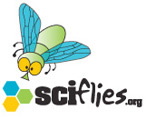What can minnows tell us about ecotoxicity?
Fathead minnow cells are the new “canaries in the cave”
“We produce over 70,000 chemicals that end up in freshwater ecosystems,” said Chris Vulpe, PhD, title at the University of California, Berkeley. “Worse, we don’t know the toxicity or potential environmental impact for the vast majority of these chemicals.”
According to Dr. Vulpe, current toxicity tests rely on expensive, slow, whole animal toxicity studies on many species, including fish. The current approach, he adds, is impractical and requires the use of whole animals to determine risks related to new and existing chemicals in fresh water ecosystems.
He and his co-researchers have a better idea.
“We intend to use cellular, high content cytotoxicity assays using the fathead minnow, an eco-indicator and sentinel species for freshwater ecosystems,” explained Dr. Vulpe, pointing out that just fathead minnow cells, not the whole fish, will be used for testing. “But, first, we have to test available high content screening assays designed for mammals for their suitability for fish cell lines.”
The scientists will test the suitability of inexpensive and rapid assays for evaluating 320 chemicals. Finally, established cell lines for the fathead minnow will be tested for response to a wide range of toxicants.
“We believe that our study will provide the first comprehensive analysis of high content screening using fish cell lines rather than whole animals,” said Dr. Vulpe. “The approach could radically transform ecotoxicity testing and provide rapid and inexpensive testing for toxic chemicals in the freshwater ecosystem.”
The researchers will use two different fathead minnow cell lines, one a tissue cell line (FHM epithelial), and the other an FHM liver cell line, recently developed. Testing will be carried out at the Berkeley Screening Center (http://bsc.berkeley.edu/) capable of carrying out high throughput High Content Screening.
To complete their first objective, a phase one study lasting three months will test the FHM epithelial line with five to 10 chemicals. Phase two will test the FHM liver cells with the same chemicals over three months. In phase three, they will test additional assays with the same two cell lines. The second objective will, in phase one, test the 320 chemicals in a high throughput format using both cell lines over a nine-month period. Phase two of the second objective will evaluate data and prepare for publication.
“This approach could significantly improve our capability to protect our aquatic ecosystems by making an assessment of the tens of thousands of chemicals for which no information is currently available,” concluded Dr. Vulpe. “Of course, the cell-based approach could also dramatically reduce the use of animals for testing chemical toxicity.”
##
Project: Cell-based assays of ecotoxicity: An alternative to animal testing
Researcher: Chris Vulpe, PhD
Affiliation: University of California, Berkeley
Project duration: 24 months
Research funds needed: $100,000







